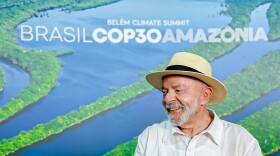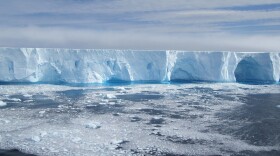
Earth Wise
Weekdays, 11:10 a.m. and 4:04 p.m.
From green business and new environmental legislation to how nature impacts our environment in ways never before considered, Earth Wise offers a look at our changing environment.
For the latest episodes, visit earthwiseradio.org.
-
Ten years ago, there were about 1,200 satellites in orbit around the earth. Now there are about 12,000 and the numbers are growing rapidly. Starlink alone has 9,000 satellites in its communications swarm and may in a few years have as many as 42,000. By 2040, there may be more than 100,000 active satellites circling Earth.
-
Lemurs are small social primates with pointed snouts, large eyes, and a long tail. These charismatic creatures are a favorite of children. There are about 100 living species and all of them live on the large island of Madagascar. Lemurs’ ancestors are thought to have originated in Africa and crossed the Mozambique Channel to Madagascar over 60 million years ago. Over time, they evolved into a large number of species.
-
According to a new study, mountains around the world are warming faster than surrounding lowlands. The increased heat at higher elevations is melting glaciers and reducing snowfall. This threatens a vital source of fresh water for more than a billion people.
-
The Trump administration broadly opposes renewable energy. The so-called Big Beautiful Bill gutted green energy subsidies and the administration has been systematically cutting back on clean energy programs including essentially bringing American offshore wind energy development to a halt. Their overall policy position is that climate change is not a serious problem and that fossil fuels are the way to go.
-
The Snowy 2.0 Pumped Storage Power Station – simply known as Snowy 2.0 – is a giant power generation project in Australia that is designed to supply 2.2 gigawatts of capacity and 350,000 megawatt-hours of large-scale energy storage to the national electricity market. The massive storage capacity will enable the introduction of more wind and solar generation by acting like a giant battery.
-
Africa’s forests were once among the world’s largest carbon sinks, absorbing roughly 20% of all the carbon dioxide captured by plants. For centuries, the continent’s rainforests and woodlands helped regulate the planet’s climate, acting as a vital buffer against global warming.
-
Storing energy in batteries is an increasingly important aspect of the modern world. Electric cars and giant battery banks for electric utilities require high-capacity batteries. The majority of these batteries are lithium-ion batteries that come in a number of different varieties based on the other elements used to make them.
-
The final agreement produced at the COP30 meeting where representatives of nearly 200 countries met to address the issue of climate change makes no mention of transitioning away from fossil fuels.
-
In 2015, a report by the UN's Intergovernmental Panel on Climate Change estimated that the world was headed towards 3.7 to 4.8 degrees Celsius of warming if stronger actions were not taken to cut emissions. This level of increased temperature (as much as nearly 9 degrees Fahrenheit) was described as being incompatible with an organized, equitable, and civilized global community. In short, the consequences would be dire.
-
Antarctica is warming roughly twice as fast as the rest of the planet, putting its vast ice sheets, surrounding oceans, and unique ecosystems at growing risk. A new study led by researchers from the Australian National University and the University of New South Wales warns that the continent may face sudden and potentially irreversible changes. Without sharp global reductions in carbon emissions, these shifts could reverberate far beyond Antarctica, affecting ocean currents, weather patterns, and coastal communities across Australia and around the world.











